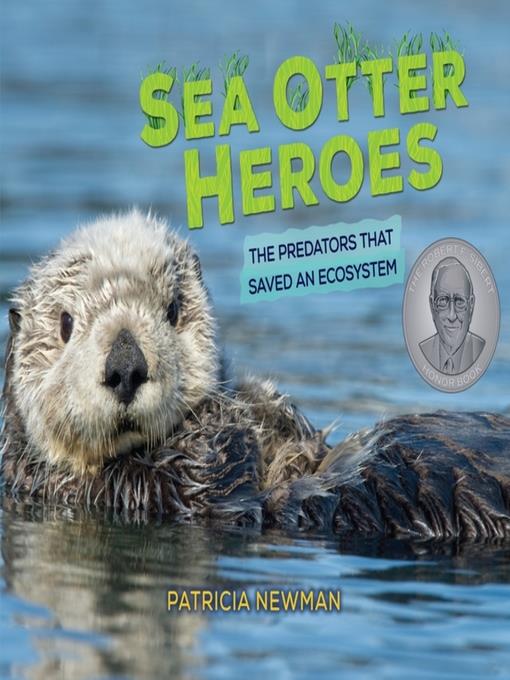
Sea Otter Heroes
The Predators That Saved an Ecosystem
فرمت کتاب
audiobook
تاریخ انتشار
2019
Lexile Score
1060
Reading Level
5
ATOS
6.9
Interest Level
4-8(MG)
نویسنده
Book Buddy Digital Mediaشابک
9781541554559
کتاب های مرتبط
- اطلاعات
- نقد و بررسی
- دیدگاه کاربران
نقد و بررسی

January 1, 2017
Gr 4-7-With their big eyes; soft, furry faces; and playful behavior, sea otters are a favorite marine mammal among kids and teens. Protective measures have stabilized sea otter numbers after the mammals once came close to extinction. Only recently, through the work of marine biologist Brent Hughes, has their role in maintaining ecosystems come to light. The Elkhorn Slough, an inlet of Monterey Bay in Northern California, is a nutrient-polluted estuary fed by the fertilizers and pesticides used in nearby farming. This work chronicles the mystery of why this ecosystem is far healthier than scientists would expect. Using the tools of scientific research, Hughes has discovered that sea otters, the top predators in the food chain, help keep the sea grass algae-free through their feeding habits, which in turn allows the growth of a fish population and preserves a natural barrier to storms. The step-by-step process of ascertaining that the sea otter was responsible for the thriving ecosystem provides a strong example of the value and excitement of primary research. Clear, full-color photographs show how Hughes confirmed his theory. However, this title resembles a picture book, which may deter older readers. VERDICT A very informative selection for environmental studies.-Eva Elisabeth VonAncken, formerly at Trinity-Pawling School, Pawling, NY
Copyright 2017 School Library Journal, LLC Used with permission.

Starred review from February 15, 2017
A young scientist's doctoral research reveals a surprising relationship between sea grasses and sea otters in a California bay.Valuable sea grasses in Elkhorn Slough, in Northern California, were thriving in spite of heavy nutrient pollution from nearby Salinas Valley farms. When Brent Hughes began his investigation of this mystery, he looked at things directly affecting sea-grass growth, such as weather patterns. It wasn't until he compared sea grass cover with otter population that he found a match. In discussions with other researchers, the young white biologist learned that otters like to eat big, meaty crabs, which feed on sea hares, a type of sea slug that in turn feeds on algae growth that smothers the grasses. Following usual procedures, he then designed experiments to prove his hypothesis that the thriving otter population made the sea grass flourish. This intriguing description of the problem he saw and his research process is a model of the scientific method. Interspersed with chapters describing the mystery, the development of the hypothesis, the proof, and the larger idea of "trophic cascades" (interactions among predators and prey that begin at the top of the food chain) are sections about otters and about sea-grass science in general. A map, ample photographs, and an attractive design add appeal, and there are sensible suggestions for environmental protection. A thoughtfully organized and attractively presented example of science in the field. (source notes, glossary, bibliography, suggested resources, index). (Nonfiction. 11-16)
COPYRIGHT(2017) Kirkus Reviews, ALL RIGHTS RESERVED.

February 1, 2017
Grades 5-8 Though the cover of promises photographs of adorable, fluffy-faced otters, this volume packs a substantial amount of scientific detail as well. The main narrative follows marine biologist Brent Hughes and his study of Elkhorn Slough, which grew healthy seagrass while other inlets in similar conditions suffered. Eventually, careful research revealed that it was the presence of sea otters, the local apex predator, that allowed the slough to flourish. In four chapters, Newman details Hughes' research processes and examines the workings of ecosystems in general and how its inhabitants affect it at every level. Illustrations include not only those irresistible otter photos but also scientific diagrams and photographs of Hughes' experiments. A final chapter on conservation explains the often-damaging effect humans can have on ecosystems, while back matter includes relevant experiments, extensive secondary resources, and ways in which young people can help the environment on a daily basis. Not just an exploration of one particular discovery in marine biology, this is a comprehensive explanation of the scientific process as well.(Reprinted with permission of Booklist, copyright 2017, American Library Association.)

























دیدگاه کاربران